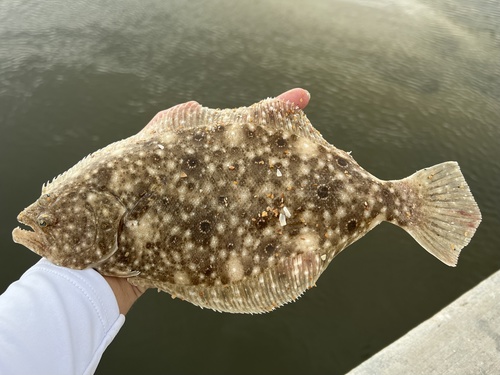
Summer Flounder
The Atlantic Bluefin Tuna (Thunnus thynnus) is a highly migratory, large pelagic fish renowned for its size, speed, and commercial value. As one of the top predators in the marine ecosystem, it plays a crucial role. This species is known for its incredible endurance, capable of crossing entire oceans.
5 7 years
Lifespan
94 cm
Length
Near Threatened
Conservation Status
null km/h
Swimming speed
Carnivorous, Scavengers
Diet
Seasonal Migration, Estuarine Migration
Migration
Appearance Overview
The Atlantic Bluefin Tuna is renowned for its large, streamlined body, built for speed and endurance.
Color
Dark metallic blue on top with a silvery underside
Fins
Two dorsal fins, the first is depressible
Body
Torpedo-shaped for efficient swimming
Length
Up to 10 feet (3 meters), commonly 6.5 feet (2 meters)
Weight
Up to 1,500 lbs (680 kg), commonly 550 lbs (250 kg)
Diet
Carnivorous, feeding on a variety of fish, squid, crustaceans, and eel.
Feeding Behavior
Highly active predator, often hunting cooperatively, using speed and agility to capture prey.
Social Behavior
Forms large schools, especially during migration and spawning, but can also be found in smaller groups or solitary.
Commercial Relevance
Extremely high value, particularly in the sushi and sashimi markets, driving significant economic interest.
Conservation measures
Subject to international fishing quotas, stock management plans, and monitoring efforts, including tagging programs.
Status
Endangered (IUCN)
Threats
Overfishing has significantly depleted populations, along with bycatch in fishing gear, and habitat degradation.
Habitat Distribution
Depth Range
0-980 meters, though they often spend time in surface waters.
Geographic Range
Western and Eastern Atlantic Ocean, including the Mediterranean Sea.
Preferred Environment
Temperate and subtropical waters, preferring open ocean but also found in coastal areas.
Reproduction and Life Cycle
Breeding Habits
Spawns in two main areas: the Mediterranean Sea and the Gulf of Mexico, with spawning occurring in warmer months.
Development Stages
Eggs hatch into larvae, which then develop into juveniles and eventually mature adults, undergoing significant growth.
Fecundity
Females are highly fecund, capable of producing up to 30 million eggs per spawning season.
Maturity Age
Reaches sexual maturity relatively late, around 4-8 years of age.
Faqs about Summer Flounder
Where can I find Atlantic Bluefin Tuna?
Atlantic Bluefin Tuna are found in the Atlantic Ocean, from the eastern coast of North America to the Mediterranean Sea.
How long do Atlantic Bluefin Tuna live?
They can live up to 40 years, though this can vary.
Can Atlantic Bluefin Tuna be fished?
Yes, but due to their endangered status, strict regulations and quotas are in place to manage fishing.
How fast can Atlantic Bluefin Tuna swim?
They are among the fastest fish in the ocean, capable of short bursts of speed up to 40-60 mph.
What makes Atlantic Bluefin Tuna such fast swimmers?
Their streamlined, torpedo-shaped body, powerful muscles, and specialized fins enable high-speed swimming.
What do Atlantic Bluefin Tuna eat?
Atlantic Bluefin Tuna primarily feed on smaller fish, squid, and crustaceans.
How many eggs do Atlantic Bluefin Tuna lay?
Females can release millions of eggs per spawning season, though survival rates of larvae are low.
Are Atlantic Bluefin Tuna warm-blooded?
They are warm-blooded, allowing them to maintain a higher body temperature than the surrounding water, aiding in muscle efficiency.
What is the biggest threat to Atlantic Bluefin Tuna?
The main threat is overfishing, which has severely impacted their populations worldwide.
Copyright @ Nature Style Limited. All Rights Reserved.
 English
English